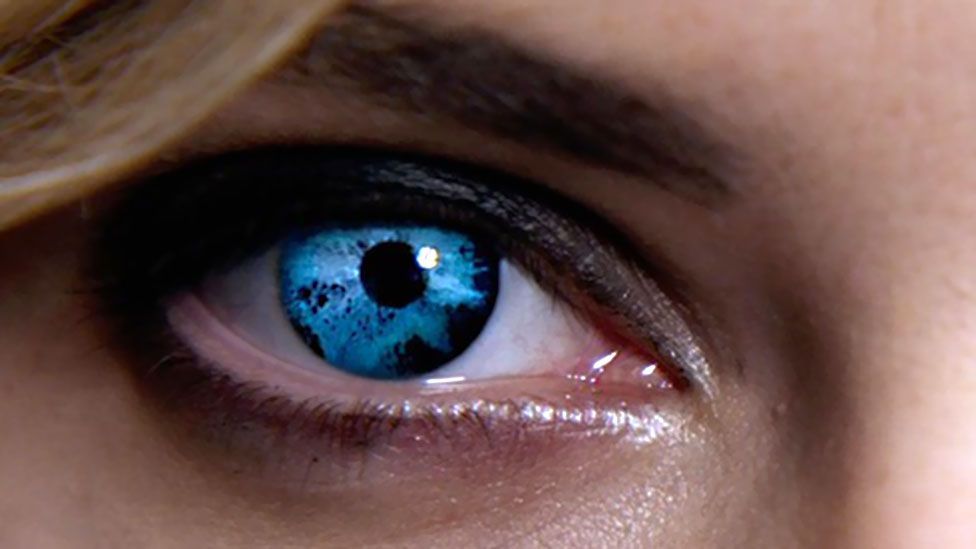How Do You Read the Kinetico Puremometer
Psychology: How many senses do we have?

We ofttimes talk of having five senses as a universal truth. In reality, there may be more – or fewer – depending on the mode you look at the question. Christian Jarrett explains the controversy.
S
Some myths near the encephalon, such as the thought nosotros only employ 10% of our grey matter, are notorious, especially among neuroscientists. These myths crop up every at present and and then (wait at the premise of the Lucy film this summer), merely they are quickly shot downwards by those in the know.
In contrast to these indelible stories, other misconceptions are stealthier and slip beneath the radar unrecognised. Ane of these is the idea that the homo brain is served by v senses. This belief is and so ingrained that fifty-fifty the scientifically literate will treat it as taken-for-granted common cognition.
Possibly it is due to the idea'south noble origins. The principle of five basic human senses is often traced back to Aristotle'due south De Anima (On the Soul), in which he devotes a separate chapter to vision, hearing, touch on, smell and gustation. Today, the five senses are considered such an elementary truth that it is sometimes used as a point of consensus earlier writers embark on more mysterious or contentious topics. "What practice we actually mean by reality?" asked the author of a contempo article in New Scientist mag. "A straightforward answer is that it means everything that appears to our five senses."
Incoming information
If only it were that simple. But defining what we mean by a "sense" leads you lot downwardly a glace slope into philosophy. One, somewhat vague, definition might argue that a human sense is but a unique mode for the brain to receive information about the world and the body. If that is the case, so nosotros can claim with confidence that there are certainly more than than five human senses.
First consider the senses that relate to the position of our bodies. Close your eyes, so touch your right forefinger to your left elbow tip. Like shooting fish in a barrel? How did you do it? Somehow yous knew where the end of your finger was and you lot also knew the position of your left elbow. This sense is known as proprioception and it'southward the awareness nosotros have of where each of our torso parts is located in space. Proprioception is possible cheers to receptors in our muscles known equally spindles, which tell the brain nearly the current length and stretch of the muscles.

Now imagine you are blindfolded and I tilted you forwards slowly. You lot'd immediately accept a sensation of how your body'south position was changing in relation to gravity. This is thanks to the fluid-filled vestibular system in your inner ear, which helps u.s.a. go on rest. This organization also gives us our experience of acceleration through space, and it links up with the optics, making information technology possible to cancel out our own motility. If you jerk your head around while reading, for case, you'll see that it makes little departure to your power to read and stay focused on the words.
There are as well numerous senses providing u.s.a. with information about the inner state of our bodies. The most obvious of these are hunger and thirst, inner body pain, and the need to empty the bladder or bowel. Less obvious and less available to conscious sensation are incoming signals about blood pressure, the pH level of the cerebrospinal fluid, plus many more.
Some might take that definition further, to argue that the senses should exist defined past the types of receptors we take; a different sensor means a unlike sense. If that were the case, so even well-known senses chop-chop split into different varieties. For case, if you airtight your eyes and I surprised you with an ice cube down your back, you'd feel a stupor of cold. This sensation would be distinct from the mere touch of a plastic cube, say. Alongside temperature-sensitive receptors, packed in our skin nosotros as well accept receptors defended to mechanical pressure, hurting (known as nociceptors) and crawling (pruritic receptors). Using the aforementioned logic, however, taste can be divided into sweet, sour, salty and bitter and potentially "umami", which is activated by monosodium glutamate and is associated with a "meaty" flavor. Splitting the senses in this manner doesn't feel similar the most intuitive mode of dealing with the question, all the same, and it becomes even more cool if we plow to smell: humans have over 1,000 distinct olfactory receptors tuned to different odorous molecules. Should each one be counted as a different sense?

Your senses often alloy, so that what yous run into tin influence what you taste (Getty Images)
At the other extreme, you could restrict our definition of detached sense to the physical categories of incoming data. Nosotros tin can simplify the homo senses down to just three – mechanical (which takes in touch, hearing and proprioception); chemic (including taste, smell and internal senses); and light.
Nonetheless another way of approaching this event is to call back not almost the category of incoming information or the perceptual feel, simply about how incoming sensory information is used. A great example is the human chapters for repeat-location. Man echo-location works by a person emitting a clicking audio with the tongue and listening for how it rebounds off the immediate surroundings. In the USA in that location is even a remarkable squad of blind cyclists – Team Bat – led by Daniel Kisch, who utilize echo-location to go mountain biking (meet www.worldaccessfortheblind.org for videos). This ability depends on the traditional sense of hearing, but the perceptual experience and role is more akin to vision. You don't need to exist blind to try information technology; even sighted people tin can larn to "meet in the dark" using echo-location. For these reasons, some consider information technology a separate sense.

This video is no longer available
As yous can see, there is no single, logical way to define the senses. In some ways, it might make petty sense to depict divisions between them at all – because that they often seem to blend together; the color of food – and even the sounds of a restaurant – can influence gustatory modality, for instance. Understanding these relationships is important when studying weather like synaesthesia and could fifty-fifty shed light on consciousness itself.
Just whichever style you look at it, five is a pretty arbitrary and meaningless number – a glaring "myth" of the encephalon that needs further recognition. Indeed, once yous first thinking almost all the unlike kinds of information reaching the human brain, you might even find that you develop a brand new sense – a radar-like sensitivity to some of the other misconceptions regarding the way the brain experiences the world. You might have once chosen it a "sixth sense" – only yous know better at present, don't you?
This article is based on a affiliate from Christian Jarrett's new book Great Myths of the Encephalon (Wiley).
If you would like to comment on this, or anything else you have seen on Future, head over to our Facebook or Google+ page, or message us on Twitter.
Source: https://www.bbc.com/future/article/20141118-how-many-senses-do-you-have
0 Response to "How Do You Read the Kinetico Puremometer"
Post a Comment